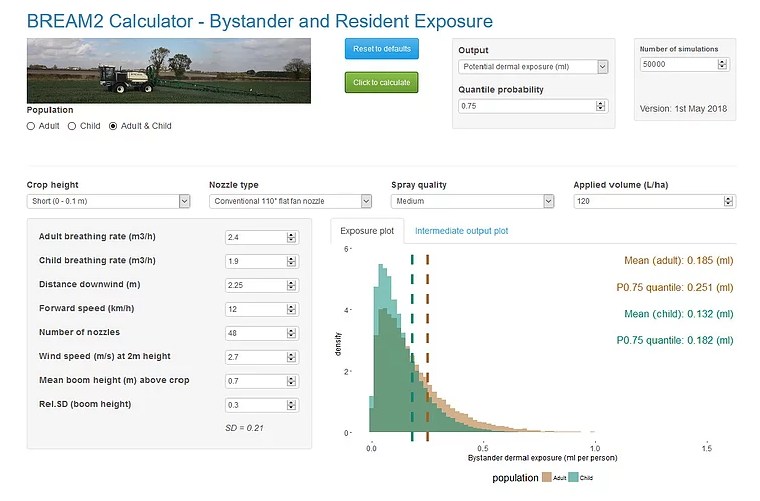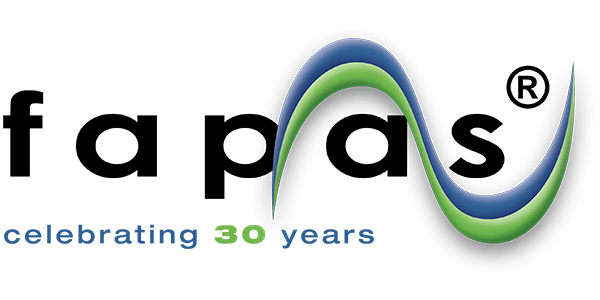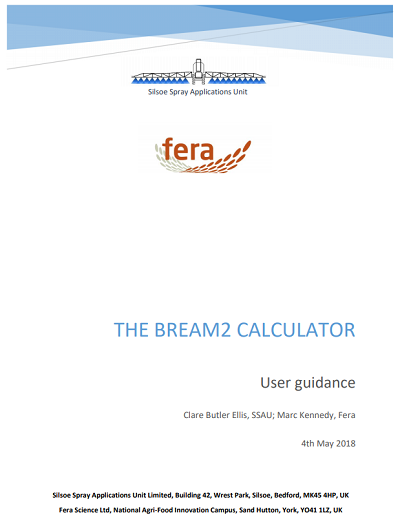
Visit our other sites
-
Fapas - Proficiency Testing
Globally recognised provider of proficiency tests, running over 400 tests annually across an extensive range of matrices and analytes
-
Great Crested Newts Testing
A single sample taken by an ecologist at any time during the newt breeding season can determine their presence or absence, saving you time and money
- The new version of the BREAM2 Calculator is now available for download - it has been developed for bystander and resident exposure to pesticide spray drift from agricultural applications by a boom sprayer
- Download Calculator

Regulation (EC) No 1107/2009 has the purpose to ensure that the residues of the plant protection products (PPP), consequent to application consistent with good plant protection practice and having regard to realistic conditions of use, shall not have any harmful effects on human health. In 2010, the EFSA Panel on Plant Protection Products and their Residues (PPR) prepared a Scientific Opinion on Preparation of a Guidance Document on Pesticide Exposure Assessment for Workers, Operators, Bystanders and Residents (EFSA Journal 2010;8(2):1501), which highlighted some inconsistencies between the approaches adopted by regulatory authorities. Therefore, the PPR Panel proposed a number of changes to practice in use (e.g. routine risk assessment for individual PPPs should continue to use deterministic methods, and that a tiered approach to exposure assessment remains appropriate; need of introducing an acute risk assessment for operators, workers and bystanders, where PPPs are acutely toxic; for acute risk assessments, exposure estimates should normally be based on 95th centiles of relevant data sets, whereas for longer term risk assessments, the starting point should be a 75th centile).
This prompted a calculator to be developed to support stakeholders in performing the assessment of exposure and risk. The development of this calculator was funded by the European Crop Protection Association. The original BREAM project and associated model was funded by the UK Government for HSE’s Chemical Regulation Division (CRD).
This latest software is an implementation of the BREAM2-IP model, developed by SSAU and Fera in the BREAM2 project, funded by Bayer AG and for which independent regulatory input was provided by CRD. The model and its validation are described in Butler Ellis et al (2018a, and 2018b) - see links to papers below. It is an update of the original BREAM model of Kennedy et al (2012).
BREAM2 Calculator
A new calculator called BREAM2 has been developed for bystander and resident exposure to pesticide spray drift from agricultural applications by a boom sprayer. It differs from the original BREAM calculator in the way that the relationship between airborne spray and potential dermal exposure, following additional research. The uncertainty in this relationship is reduced and the variability is more accurately captured in this version. A statistical comparison between the new model and field data shows that BREAM2 is a better predictor than BREAM of potential dermal exposures. The predicted 75th and 95th percentiles of potential dermal exposure are reduced compared with BREAM under normal operating conditions.
Download BREAM2 Calculator
To download the BREAM2 Calculator please click on the link below that will take you to a OneDrive download page where you will find the calculator compressed in a ZIP file. For a successful download, click directly on the DOWNLOAD button at the top left corner of the screen as seen on the image on the left. DO NOT tick on the BREAM2_Calc folder seen below, as this is a preview of the ZIP file contents, and click the DOWNLOAD button afterwards, because this will cause an error on the download by OneDrive.


Other References
Butler Ellis, M C; Kennedy, M C; Kuster, C J; Alanis, R; Tuck, C R (2018a) Improvements in modelling bystander and resident exposure to pesticide spray drift: investigations into new approaches for characterizing the ‘collection efficiency of the human body. Annals of Work Exposures and Health, Volume 62, Issue 5, 28 May 2018, Pages 622–632
Butler Ellis, M C, Kennedy, M C, Alanis, R J, Tuck, C R, Kuster, C J (2018b) Human exposure to spray drift: investigations into modelling the
spray exposure of residents and bystanders and its variability
Kennedy, M.C.; Butler Ellis, M.C.; Miller, P.C.H. (2012) BREAM: A probabilistic Bystander and Resident Exposure Assessment Model of spray drift from an agricultural boom sprayer. Computers and Electronics in Agriculture, 88, 63-71
BREAM2 User Guide
This document provides guidance for the installation and usage of BREAM2, and provides some recommendations and suggestions for how it could be used in a regulatory context. The effect of different variables on exposure is discussed. Further areas for development, particularly for the inclusion of additional mitigation, are identified.
The BREAM (Bystander and Resident Exposure Assessment Model) model (Kennedy et al, 2012) for bystander and resident exposure to spray drift from boom sprayers has recently been incorporated into the European Food Safety Authority (EFSA) guidance for determining non-dietary exposures of humans to plant protection products (EFSA, 2014). The BREAM model has a mechanistic component that predicts airborne spray and ground deposits, and an empirical component that relates airborne spray to deposits on the human body, from which dermal exposure can be calculated. The mechanistic component is based on the Silsoe Spray Drift Model (Butler Ellis and Miller, 2010), which is a particle tracking model that predicts the movement of individual droplets released from a sprayer. However,instead of incorporating this model directly into BREAM, an emulator is used instead which captures the main behaviour and can be run very rapidly.
BREAM2 User GuideSilsoe Spray Applications Unit
Silsoe Spray Application Unit is an experienced internationally recognised facility for research, development and bespoke testing, relating to the characterisation of sprays and spray behaviour, with particular expertise in the application of agricultural pesticides.
Find out more about BREAM214th IUPAC International Congress of Crop Protection Chemistry
This event will be held in Ghent, Belgium, 19-24 May 2019 and BREAM2 has been submitted as part of a public consultation to be taken into account in ESFA's future plans. Clare Butler Ellis (SSAU) will be presenting at the IUPAC meeting in May.
Find out more
Copyright © 2025 Fera Science Limited (“Fera”). All rights reserved.
For further information about how Fera uses any personal data collected from you, please see our Privacy Notice at www.fera.co.uk/privacy-policy.





